Festival Pin – Samhain
€12.00Festival Pin – Samhain
Beautiful image of the Cailleach, to represent the Winter months.
Each pin is 32mm x 32mm, with silver plating and a metal clutch.
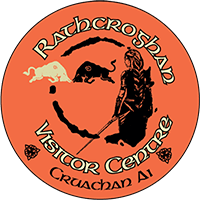


Festival Pin – Samhain
Beautiful image of the Cailleach, to represent the Winter months.
Each pin is 32mm x 32mm, with silver plating and a metal clutch.
The Burning of Knockcroghery
Written and Illustrated by AnnMarie Murray
This colourful children’s book brings to life the story of the burning of Knockcroghery in 1921 by the Black and Tans and the resilience of the local community as they deal with the aftermath of their destroyed village. Told through the eyes of young Sally Finnegan, it is vividly illustrated and contains interesting facts on the Crofton estate at Mote Park, the Clay Pipe industry and the backdrop of revolutionary Ireland.
On the evening of 20 June 1921, Colonel-Commandant Thomas Stanton Lambert was assassinated at Benown near Glasson in Co. Westmeath. Hours later, the small village of Knockcroghery in south Co. Roscommon was set ablaze by the British forces, seemingly in an act of retribution for Lambert’s murder. The burning was an unfortunate case of mistaken identity, however, that ultimately resulted in the decimation of the local economy and heralded the end of clay-pipe production in the area. This study explores the complex world of rural Ireland against the backdrop of the Irish War of Independence, while demonstrating how local communities were impacted by evolving national narratives. Although it later emerged that the Knockcroghery company of the Irish Republican Army was not involved in Lambert’s killing, this study examines how the social and economic fabric of that community was altered as a result.
This DIGITAL VERSION of ‘A Dictionary of Roscommon Biography’ contains 5000 individual entries which describe the careers of people in all fields of endeavour, including politics, religion, law, literature, journalism, business, trades, medicine, sport, engineering, painting, music and entertainment and is a must for anyone with an interest or connection with Co. Roscommon.
Upon your purchase of this digital copy, Rathcroghan Visitor Centre will forward your contact details to the author, who will then personally email your electronic copy in PDF format.*
*please note that by purchasing this version, you agree to the sharing of your contact details with the author Mike Lennon in order to facilitate the file transfer.
(by Douglas Hyde, illustrated by Paul Bolger)
Over one hundred and twenty years ago a young man set about collecting Irish folk tales before they were lost forever. He taught himself Irish so that he could write the stories down as they were told, by storytellers beside the fire, word for word. Ancient Folk Tales of Ireland contains six of those stories, each brought to life with stunning illustrations.
That young man was Douglas Hyde, he would become one of Ireland’s finest scholars, working to preserve Ireland’s ancient heritage for future generations. In later life he would become Ireland’s first president but he is equally remembered for the wonderful stories he helped to keep alive.
Beautifully illustrated by Paul Bolger, this collection is based on those stories collected by Douglas Hyde.
Moore and Creagh in South Roscommon by Padraic and Xandra Kilduff.
This edition is the third installment of the three volumes on the parishes of Moore
and Creagh, which make up the Half Barony of Moycarn, and cover its history
from earliest times to the first decades of the 20th century.
From Kings to Warlords: The Changing Political Structure of Gaelic Ireland in the Later Middle Ages – Katharine Simms
The Norman invasion of Ireland (1169) did not result in a complete conquest, and those native Irish chieftains who retained independent control of their territories achieved a recovery of power in the later middle ages. Katharine Simms studies the experience of the resurgent chieftains, who were undergoing significant developments during this period. The most obvious signs of change were the gradual disappearance of the title rí (king), and the ubiquitous presence of mercenary soldiers. On a deeper level, the institution of kingship itself had died, as is shown by this study of the election and inauguration of Irish kings, their counsellors, officials, vassals, army, and sources of revenue, as they evolved between the twelfth and sixteenth centuries. Sources such as the Irish chronicles, bardic poetry, genealogies, brehon charters and rentals, family-tract and sagas are all used, in addition to the more familiar evidence of the Anglo-Norman administration, the Church, and Tudor state papers.
Dr Katharine Simms lectures in the Department of Medieval History, Trinity College, Dublin.
Roscommon Under 21 Football Team – All Ireland Champions 1966
Compiled by Paul Mockler, this 90 page fully illustrated colour journal was produced to commemorate the great achievements of the mighty Roscommon Under 21’s who won All Ireland glory in 1966.
All surplus proceeds from the sale of this journal will be donated to Western Alzheimer’s.
An Teachtaire le Colmán Ó’Raghallaigh, Maisithe ag Tomm Moore.
“I see great danger coming… the slave shall return.” This is the chilling prediction of Lochrú the Druid, to the High King and his courtiers. But if he does return, will the powers of darkness be able to prevent his mission? Or can he overcome the druids and the old order? The second part of the epic tale of Patrick, full of action and spine-tingling tension.
“Feicim contúirt mhór thar sáile chugainn… Fillfidh an sclábhaí.” Sin an tuar a dhéanann Lochrú, an draoi, don Ardrí agus lucht a chúirte. Ach ma fhilleann, an mbeidh fórsaí an áibhirseora in ann a mhisean a chur ó mhaith? Nó an dtig leis dul i ngleic leis na draoithe agus an seanréimeas a chloí? An dara cuid de scéal eipiciúil Phádraic, é lán d’aicsin agus teannais.
A full English translation is available at www.leabhar.com
This is the gripping story of Patrick, the slave boy, his capture by Irish raiders and his dramatic escape. The first Irish graphic novel, magnificently illustrated throughout, it is suitable for all readers from 10 to adult.
An Sclábhaí won a prestigious Bisto Merit Award in May 2002.
English translation available at www.leabhar.com
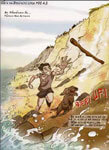
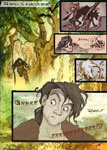
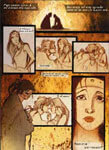
A stunning graphic novel of An Táin, the classic tale of Cúchulainn, Queen Méabh and the cattle-raid for the Brown bull of Cooley. Written by prize-winning author Colmán Ó Raghallaigh, superbly illustrated by Barry Reynolds and produced by the Cartoon Saloon in full-colour graphic novel format, this is the fourth in a series of highly successful Irish language graphic novels published by Cló Mhaigh Eo.
A full English translation is available at www.leabhar.com
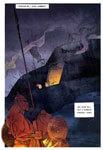
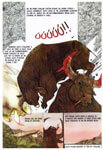
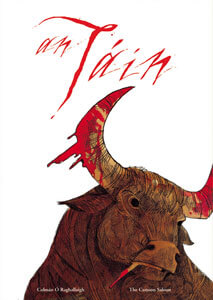
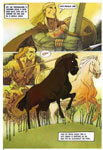
An Tóraíocht – le Colmán Ó Raghallaigh
A haunting tale of love and jealousy where Gráinne and Diarmaid are relentlessly pursued by Fionn whose desire for revenge must inevitably lead to tragic consequences. A superbly illustrated and fast-paced graphic novel.
Tá an grá agus and t-éad fite fuaite lena chéile sa scéal tragóideach seo ina chuireann Gráinne an laoch óg, Diarmaid, faoi gheasa í a bhreith leis ón bhfear a bhfuil sí geallta leis. Sárinsint agus sárléaráidí ó thús go deireadh.
A full English translation is available at www.leabhar.com
Due to a Health & Safety review, we are not currently bringing visitors into the cave during our site tours until further notice. |